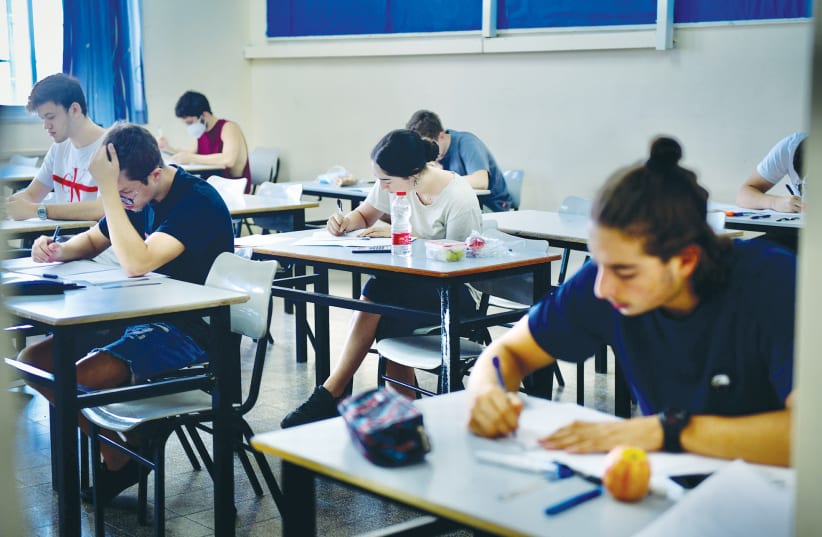The Education Ministry published on Monday its annual "State of Education" report for the 2019-2020 school year, in which it recorded a 3.7% increase in high-school diploma eligibility despite the advent of the coronavirus. The ministry said that it lowered the bar on the matriculation exams' requirements.
The incessant disturbances to the school year and the differences between schools in the success of their online study platforms created discrepancies that forced the ministry to change its requirements, the report said.
The ministry lowered the number of requisite matriculation exams to five and reduced the amount of material in each exam.
It did not say why the numbers for the 2019-2020 school year were only published in October of 2021.
The data was based on questionnaires filled out by students and was divided into three clusters: Learning and Achievements, Values and Educational Climate, and Perseverance vs. Dropout.
Some 73.4% of Israeli students who finished high school in 2020 were eligible for a diploma, up 3.7% from 2019.
According to population group, 75.8% of Jewish high-school graduates, 89.2% of Druze and 58.1% of Bedouin students were eligible. Some 69.4% of Israeli-Arab students were eligible – not including east Jerusalem, where the majority of students take the exams administered by the Palestinian Authority.
In the Jewish educational system, 84% in general high schools, 86% in national-religious schools and 24% of haredi (ultra-Orthodox) students were eligible.
A 2.4% increase was recorded for students who did the maximum level 5 in English language studies (from 39.1% to 41.5%). The percentage of students who completed level 5 mathematics remained virtually the same as the previous year (15.5% to 15.6%).
The report indicated a 3% decrease in some pedagogical parameters.
Capability, curiosity and interest in studies went down from 52% to 49%, quality of teaching went down from 56% to 53% and the quality of evaluation by students of teachers also went down from 56% to 53%.
The dropout rate decreased by almost half, from 1% in the 2018-2019 school year to 0.6% in the 2019-2020 year – which is interesting considering the dramatic rise in online learning and the decrease in physical, in-person engagements. The report included a caveat that due to remote learning during the lockdowns, attendance was not taken, rendering these statistics subject to debate.
In addition, while encouragement on the part of educators for social and civil involvement dropped significantly from 60% to 54%, the "general positive study environment" rose slightly - from 70% to 71%. Reports on school violence remained virtually the same.

